This month’s Bay Island Bonsai meeting was devoted to a bonsai critique by Akio Kondo. Kondo discussed the good and bad points of each tree, making suggestions for improvement and answering questions along the way. Occasionally – to our general encouragement – he pulled out scissors and made a few cuts. Here are some of the trees he looked at.
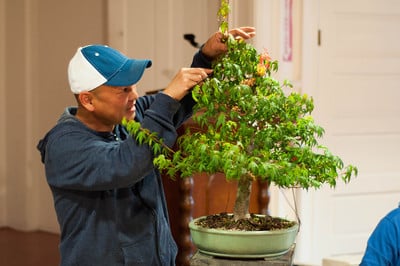
Japanese maple
Kondo thought this Japanese maple is well on its way. The tree has good roots thanks to an air layer. Kondo suggested that the best time to layer maples is right before new leaves open in spring.
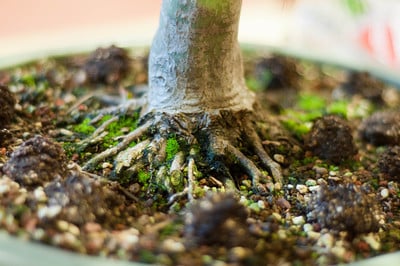
Japanese maple – uniform roots are a sign of layering
Jim Gremel brought a San Jose juniper with kishu shimpaku foliage. We talked about the pot. The ideal pot would be somewhat smaller, maybe with scalloped edges.
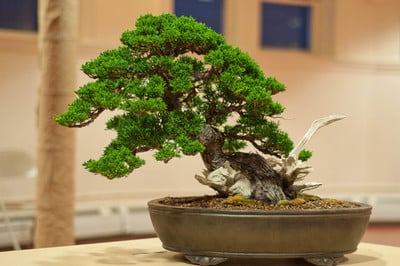
Shimpaku
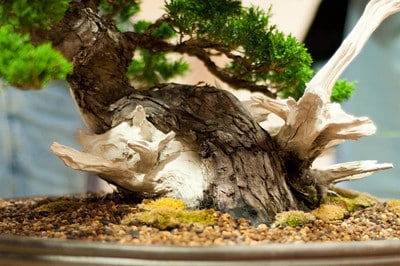
Shimpaku – trunk detail
Kondo also suggested making a small jin. After cutting away the foliage, Kondo recommended filling the gap with a small branch.
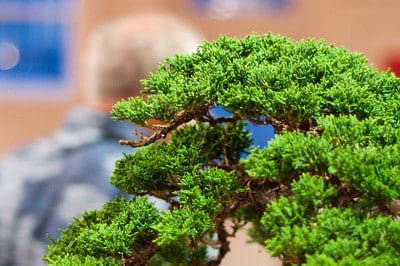
New jin – look beneath the apex on the left
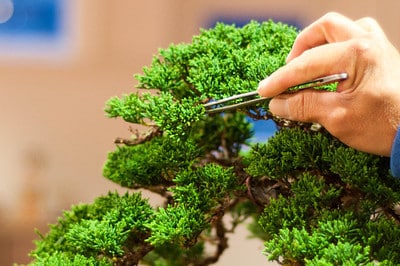
Filling the gap
Kondo next commented on a California juniper with shimpaku foliage.
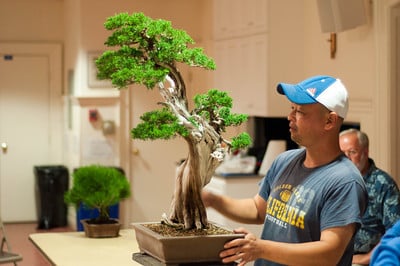
Sizing up a California juniper
He made basic recommendations for the main branches. He wanted the first branch on the right to be larger and a little lower; the left branch could be lowered; and the top right and left branches at the base of the apex could also be lowered.
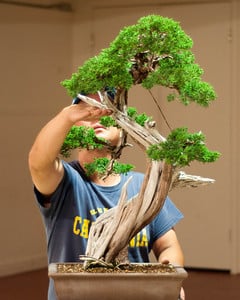
Kondo indicating future branch positions
Another California juniper proved tricky. The narrow trunk emerged vertically before expanding and teetering off to one side like a wave. To improve the taper of the tree, Kondo recommended changing the soil line.
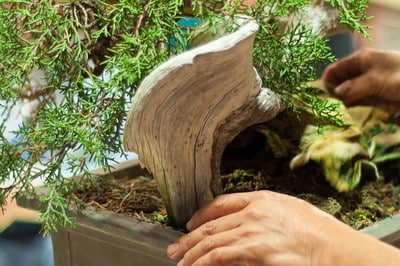
California juniper – trunk detail
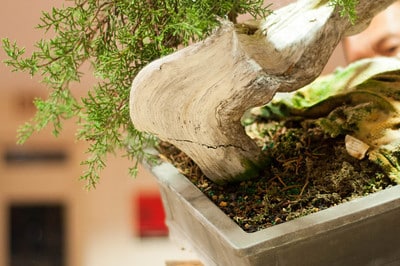
Suggested soil line
Planting the tree deeper and changing the angle at which it is planted would widen the base of the trunk and make the tree appear more powerful.
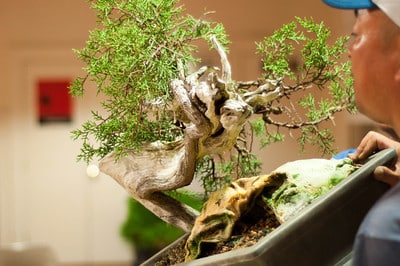
California juinper – right side
Kondo’s advice for a cork elm was simple – all of the main branches needed to be lower. He suggested using guy wires and doing the work incrementally to avoid stressing or breaking important branches. He thought a “white” pot – what we would consider to be dirty white or even yellowish – or blue pot, oval in shape, would make a good container for exhibit.
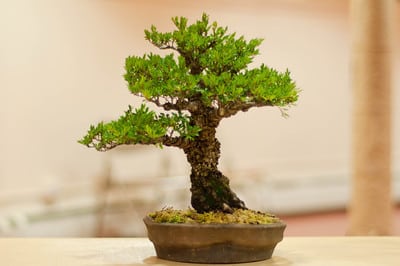
Cork oak
A third California juniper elicited a term from Kondo with which none of us were familiar. He said the tree could be an example of the kawarigi style, a style in which all of the branches emerge from roughly the same spot. I’m not confident that we fully understood what he was trying to convey about the style. We were clear, however, when he mentioned refining the jin at the tree’s apex and suggested a front for the tree that made good use of the deadwood along the trunk.
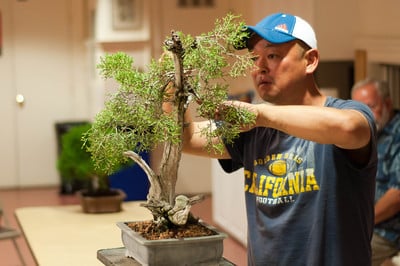
California juniper
A prostrata juniper proved a good exercise in selecting the front of a tree. Here’s the tree from the current front.
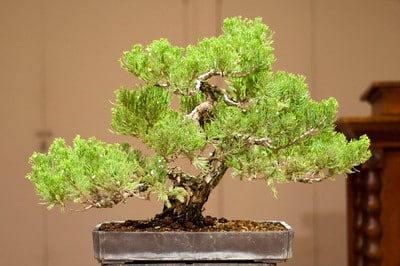
Prostrata juniper – current front
Kondo suggested tilting the tree slightly to give it better movement.
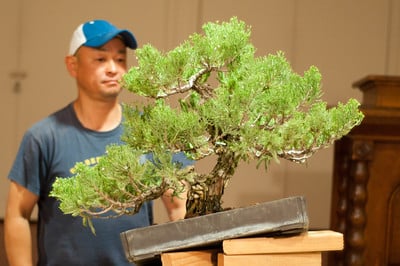
Prostrata juniper – new front
He then pointed out the good deadwood on the other side of the trunk. This, he suggested, would make an even better front.
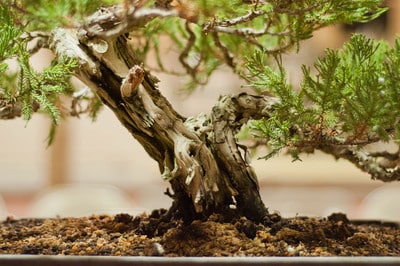
Trunk detail with deadwood
Kondo thought the front without deadwood would make a good front maybe three years from now, and that the alternative front would make a good front roughly 10 years from now.
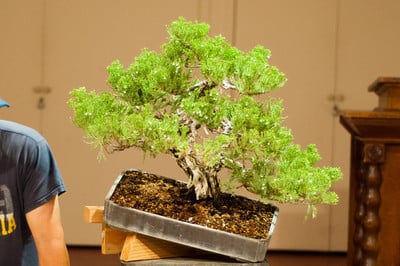
Future front
Using this front would take longer because the branches needed to complete this front need more time to develop. For both fronts, Kondo recommended making the silhouette much smaller to improve the balance between foliage and trunk. He also suggested grafting two new branches in the tree’s interior to fill some open areas.
I’ve always liked the idea of taking advantage of different “fronts” over time. In the case of this prostrata, the owner can show the tree sooner rather than later and still have a somewhat “new” tree to show down the road.
Subscribe to Bonsai Tonight
New Posts Delivered Every Tuesday and Friday
John Kirby says
Akio looks to be in his element. Looks like a great time.